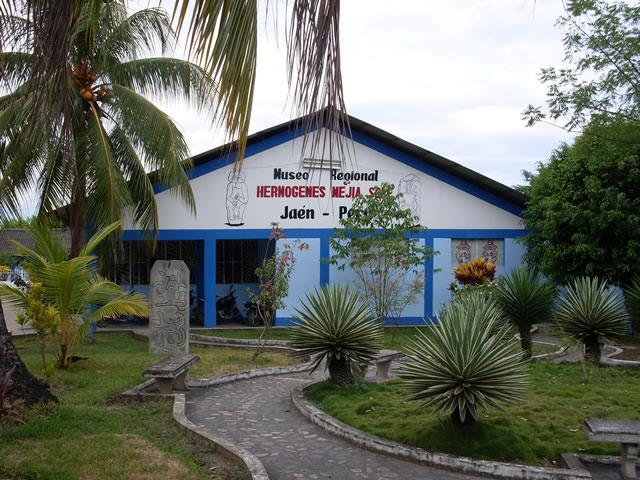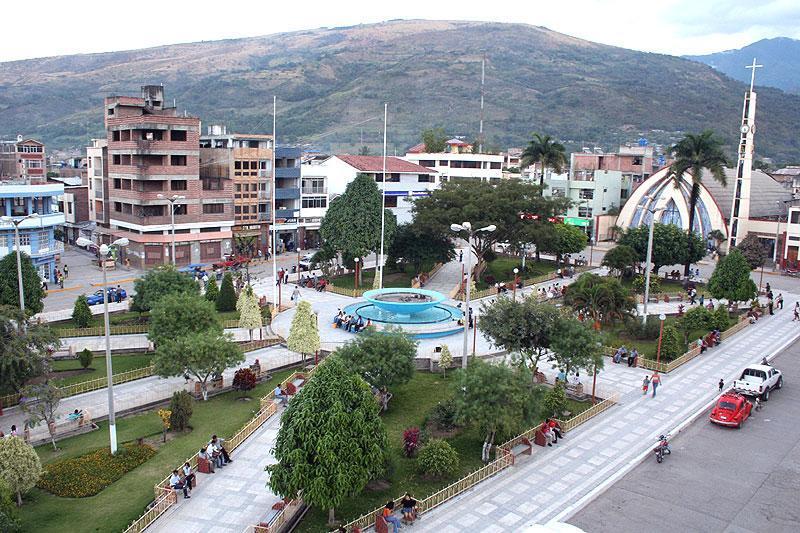Jaén, Cajamarca, Peru
Suggest Place to Visit
1071
Track to location with GPS |
 |
The territory of the current Province of Jaén has formed, since the dawn of American civilization, one of the areas of greatest regional interrelation and cultural integration of the Andean Amazonian space.
From the first settlers and from the origins of their culture, the archaeological relics of their great human settlements and ceremonial centers such as Montegrande, Tocaquillo, Shaupe, Huayurco, tomependa, with their lithic and pictorial art, or their varied pottery and gold metallurgy, among other samples, are the traces that testify to its civilizational route followed since times before the great formation of the Chavín Culture.
In the Early formative period, the influences of the Pandache and Pacopampa are perceived in their ceramics; during the formative superior by the years 400 a. C. the Cupisnique (Chavín), arrived in the Jaén and Marañón valley through Pacopampa, their powerful enclave, which in their advance built the great ceremonial center of Pomahuaca on the banks of the Huancabamba river, a place called Ingatambo.
Due to its proximity to the coastal and high Andean region, it was always subject over time to the influence of strong regional developments, such as the Vicús, Moche, Chimú, Cajamarca and Chachapoyas (Tabaconas, Salliques and Chontalies). Finally, only the part of the northern highlands was annexed to the Tahuantinsuyo empire by Tupac Inca Yupanqui in the 1470s AD. The Spanish, informed of their great wealth, prioritized their conquest. In Lima, Francisco Pizarro entrusted this mission to Captain Juan Porcel de Padilla, who entered the Chuquimayo region (in the Quehua language ´´río de las pesitas de oro´´) in 1536, and was replaced by Diego Palomino, who in 1549 founded the City of Jaén de Bracamoros, on the left bank of the mouth of the Chinchipe River at the confluence with the Marañón near the current district of Santa Rosa (P.Martín Cuestas SJ).
Captain Juan Porcel, was the one who founded the first city in these parts, with the name of Nueva Jeréz de la Frontera, the same one that would be located very close to Pongo de Rentema in the Bagua Province area (Amazonas); the same that three years later moved it to another place on the banks of the Chuquimayo River (current Chinchipe River). On the remains of this second mentioned city, Captain Diego Palomino founded Jaén.
Jaén, in colonial times, was part of the Viceroyalty of Peru. In 1563 it came to depend politically and administratively on the Royal Audience of Quito, and religiously, on the bishopric of Trujillo from 1616; it suffered annexation to the Viceroyalty of New Granada in 1717 - 1739.
In 1807 the city of Jaén de Bracamoros was moved to its current location, on the banks of the Amojú River, Quintana Sector.
In the emancipatory feat, the government of Jaén supported the independence of Trujillo and proclaimed its own independence from Spain and the Royal Court of Quito, under the legal principle of Free Determination of the Peoples, on June 4, 1821, a merit that It becomes the cradle of Peru (Heart of Peru). In 1822 he had representation in the Congress of the Republic. The Province was created on May 19, 1828. In its beginnings it was part of the department of Trujillo, after La Libertad, until 1855, when the Department of Cajamarca was created.
The city of Jaén, located in the northern part of the Department of Cajamarca, and North East of the Peruvian territory, comprising part of the Sierra Region as districts of Sallique and San Felipe. Its hot and humid climate, you can notice two marked times. The stage between November and May with temperatures that fluctuate between 15º to 33º. Altitude 740 m.s.n.m.
The PAKAMUROS ethnic group, either called Aguarunas, Huambisas, they were also given the name of Jíbaros, they were the first settlers in these valleys, their way of life was centered on the use of all natural resources, they generally lived near the Ríos were characterized by their heroism, bravery, courage, and goodness. On this territory the Spaniards established the so-called encomiendas; they also established reductions or towns of Indians.
Jaén is embraced by fabulous rivers full of life and vegetation, in principle the magical HUANCABAMBA that later becomes the CHAMAYA river, when it receives the influxes of the Chotano and Chunchuca rivers. On the other hand, the silent Tabaconas that flows into the Chinchipe River.
There is a variety of flora, especially the orchids coveted by visitors. Due to its pleasant climate, its hospitality, its customs, its traditional festivals and its typical food, it is considered an important attraction, adding to it its excellent landscape.
As part of the most important tourist attractions in the city is the Missouri Botanical Garden located in the Fila Alta sector, the HERMOGENES MEJIA SOLF regional museum, the MANANTIAL DE VIDA recreational center located in SHUMBA, the lord of Huamantanga forest located in the western a few km from the city, the same one that offers a variety of flora and fauna one of the most colorful birds is the Cock of the Rocks, considered the NATIONAL BIRD OF PERU, and the Pilco. It also offers visitors the beauty of its waterfalls located in the forest.
Folklore
Jaén has a great variety of dances and musical manifestations that are complemented by the multicolored clothing of the dancers. The main representatives of the dances themselves are the INC, the marinera academy and the ´´Héctor Guevara´´ dance school, and dance workshop Raíces del Peru, dancers, young blood, CULTURAL AND SPORTS ASSOCIATION ´´YAWAR LLAQTA´´ and others,
Comments
We don´t have yet any comments about:
City of Jaén
City of Jaén
Be the first to leave a comment as it is very important to inform other people
Outros locais a visitar
Within a radius of 20 km from:City of Jaén
Hermógenes Mejia Solf Regional Museum |
| 1,4 Km |
 |
Hotel reservation near City of Jaén within a radius of 20 km
No results
Why to book with BOOK HOTEL LISBOA
The best prices
Our partnerships with the world´s largest operators offer research on the best market prices.
More options
At Rotas Turisticos you can book the hotel, buy the air ticket, book the transfer from the airport to the hotel and vice versa, book the local excursions, rent the car, take travel insurance and consult the places to visit and where to go.
Holiday Tips & Destinations
Hundreds of holiday destinations with all the options that allow you to easily choose the destination that best suits your dream vacation.
BOOK HOTEL LISBOA
Links





